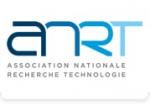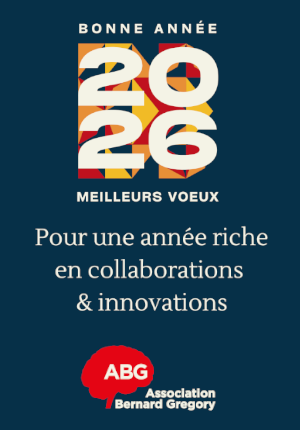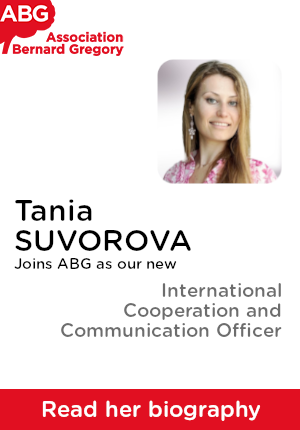Structure en partons du nucléon // Partonic structure of the nucleon
|
ABG-134371
ADUM-68164 |
Sujet de Thèse | |
| 14/11/2025 |
Université Paris-Saclay GS Physique
Orsay - Ile-de-France - France
Structure en partons du nucléon // Partonic structure of the nucleon
- Physique
Distributions de partons, Diffusion Compton virtuelle profonde, Diffusion Compton profonde doublement virtuelle, Intelligence artificielle
Parton distribution, Deeeply virtual Compton scattering, Double deeply virtual Compton scattering, Artificial intelligence
Parton distribution, Deeeply virtual Compton scattering, Double deeply virtual Compton scattering, Artificial intelligence
Description du sujet
La compréhension de la Chromodynamique Quantique (QCD) est un challenge majeur de la physique nucléaire. Comment la masse du nucléon émerge d'une assemblée de particules essentiellement sans masse? Comment le spin du nucléon se construit d'une assemblée de quarks et de gluons? Ces questions de base restent encore sans réponse. Une approche à ces problèmes est la détermination expérimentale de la distribution des constituants du nucléon (les partons) dans les espaces de configuration et d'impulsions. Les Distributions Généralisées de Partons (GPDs) encodent les corrélations entre les partons au sein du nucléon et contiennent en conséquence des informations sur la structure et la dynamique du nucléon qui peuvent être confrontées à des calculs QCD sur réseaux.
Ce projet consiste en l'étude expérimentale de la distribution Eq mesurée dans la réaction de Diffusion Compton Virtuelle Profonde (DVCS) sur un neutron. Il implique l'analyse et l'interprétation de données expérimentales récemment acquises. L'utilisation de techniques d'intelligence artificielle est en la matière un aspect novateur du projet qui concerne également le développement d'une nouvelle génération d'expériences, soit la mesure de la réaction de Diffusion Compton Profonde Doublement Virtuelle (DDVCS) dans la perspective des projets SoLID(mu) et (mu)CLAS12 récemment approuvés.
------------------------------------------------------------------------------------------------------------------------------------------------------------------------
------------------------------------------------------------------------------------------------------------------------------------------------------------------------
The understanding of the Quantum Chromo-Dynamics (QCD) is a major challenge of nuclear physics. How the mass of the nucleon emerges from essentially massless constituents ? How the spin of the nucleon build-up from an assembly of quarks and gluons ? These are basic and still unanswered questions. An approach to solve these problems consists in the experimental determination of the distribution of the nucleon constituents (the partons) in the momentum and configuration spaces. These so-called Generalized Parton Distributions (GPDs) encode the correlations between the partons inside the nucleon, and consequently contain information about the structure and dynamics of the nucleon which can ultimately be confronted to lattice QCD calculations.
This project consists in the experimental study of the distribution Eq which is accessed in the Deeply Virtual Compton Scattering (DVCS) reaction off a neutron. It involves the analysis and interpretation of recently acquired experimental data developing and using Machine Learning techniques. It also concerns the development of the next generation of experiments that are the measurements of the Double Deeply Virtual Compton Scattering (DDVCS) reaction in the perspective of the recently approved SoLID(mu) and (mu)CLAS12 experimental projects at the Jefferson Lab (JLab).
------------------------------------------------------------------------------------------------------------------------------------------------------------------------
------------------------------------------------------------------------------------------------------------------------------------------------------------------------
Début de la thèse : 01/10/2025
Ce projet consiste en l'étude expérimentale de la distribution Eq mesurée dans la réaction de Diffusion Compton Virtuelle Profonde (DVCS) sur un neutron. Il implique l'analyse et l'interprétation de données expérimentales récemment acquises. L'utilisation de techniques d'intelligence artificielle est en la matière un aspect novateur du projet qui concerne également le développement d'une nouvelle génération d'expériences, soit la mesure de la réaction de Diffusion Compton Profonde Doublement Virtuelle (DDVCS) dans la perspective des projets SoLID(mu) et (mu)CLAS12 récemment approuvés.
------------------------------------------------------------------------------------------------------------------------------------------------------------------------
------------------------------------------------------------------------------------------------------------------------------------------------------------------------
The understanding of the Quantum Chromo-Dynamics (QCD) is a major challenge of nuclear physics. How the mass of the nucleon emerges from essentially massless constituents ? How the spin of the nucleon build-up from an assembly of quarks and gluons ? These are basic and still unanswered questions. An approach to solve these problems consists in the experimental determination of the distribution of the nucleon constituents (the partons) in the momentum and configuration spaces. These so-called Generalized Parton Distributions (GPDs) encode the correlations between the partons inside the nucleon, and consequently contain information about the structure and dynamics of the nucleon which can ultimately be confronted to lattice QCD calculations.
This project consists in the experimental study of the distribution Eq which is accessed in the Deeply Virtual Compton Scattering (DVCS) reaction off a neutron. It involves the analysis and interpretation of recently acquired experimental data developing and using Machine Learning techniques. It also concerns the development of the next generation of experiments that are the measurements of the Double Deeply Virtual Compton Scattering (DDVCS) reaction in the perspective of the recently approved SoLID(mu) and (mu)CLAS12 experimental projects at the Jefferson Lab (JLab).
------------------------------------------------------------------------------------------------------------------------------------------------------------------------
------------------------------------------------------------------------------------------------------------------------------------------------------------------------
Début de la thèse : 01/10/2025
Nature du financement
Précisions sur le financement
Contrats ED : Programme blanc GS-Physique
Présentation établissement et labo d'accueil
Université Paris-Saclay GS Physique
Etablissement délivrant le doctorat
Université Paris-Saclay GS Physique
Ecole doctorale
576 Particules, Hadrons, Énergie et Noyau : Instrumentation, Image, Cosmos et Simulation
Profil du candidat
Connaissances informatiques confirmées
Solides connaissances en physique
Des compétences en intelligence artificielle seront appréciées
Confirmed informatic background Confirmed knowledge of physics Artificial Intelligence knowledge would be appreciated
Confirmed informatic background Confirmed knowledge of physics Artificial Intelligence knowledge would be appreciated
30/09/2026
Postuler
Fermer
Vous avez déjà un compte ?
Nouvel utilisateur ?
Besoin d'informations sur l'ABG ?
Vous souhaitez recevoir nos infolettres ?
Découvrez nos adhérents
 MabDesign
MabDesign  CESI
CESI  Nokia Bell Labs France
Nokia Bell Labs France  TotalEnergies
TotalEnergies  MabDesign
MabDesign  PhDOOC
PhDOOC  ONERA - The French Aerospace Lab
ONERA - The French Aerospace Lab  Généthon
Généthon  CASDEN
CASDEN  Institut Sup'biotech de Paris
Institut Sup'biotech de Paris  Groupe AFNOR - Association française de normalisation
Groupe AFNOR - Association française de normalisation  ASNR - Autorité de sûreté nucléaire et de radioprotection - Siège
ASNR - Autorité de sûreté nucléaire et de radioprotection - Siège  Laboratoire National de Métrologie et d'Essais - LNE
Laboratoire National de Métrologie et d'Essais - LNE  Servier
Servier  Aérocentre, Pôle d'excellence régional
Aérocentre, Pôle d'excellence régional  ANRT
ANRT  Ifremer
Ifremer  SUEZ
SUEZ  Tecknowmetrix
Tecknowmetrix  ADEME
ADEME



